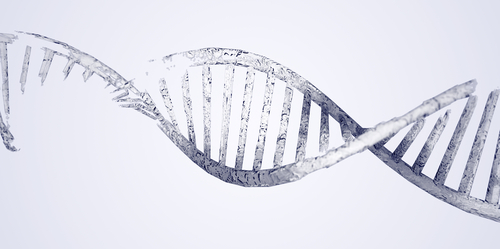DNA damage caused by cancer treatment reversed by ZATT protein
ANI Oct 09, 2017
In a recent research, a group of scientists have discovered a new way that cells fix an important and dangerous type of DNA damage known as a DNA-protein cross-link (DPC).

The researchers found that a protein named ZATT can eliminate DPCs with the help of another protein, TDP2.According to study’s corresponding author Scott Williams, Ph.D., TDP2 was important for removing DPCs, but they did not know how it was directed to where it needed to work, according to corresponding author Scott Williams, Ph.D.The team used a multi-pronged approach to identify ZATT as a new contributor to this process and determine how it guides TDP2 to DPCs so they can be repaired.While Matthew Schellenberg, Ph.D., an NIEHS visiting fellow and lead author on the paper, said when DNA becomes tangled inside of cells, organisms use a protein called topoisomerase 2 (TOP2) to untangle it.
Schellenberg noted, “Imagine your DNA is a giant ball of yarn. TOP2 cuts and reties individual threads to disentangle the ball.”He explained that TOP2 normally conceals its cut DNA ends within the core of the TOP2 protein that encircles DNA.Doing so ensures the protein can complete the second part of its job, which is rejoining DNA ends.He said these molecular charges are armed by TOP2’s interaction with environmental toxicants, chemical metabolites, tobacco exposures, or DNA damage caused by ultraviolet light.He added that TOP2-DPCs are most potently formed by pharmaceutical drugs that humans exploit to eradicate cancer cells, making TOP2-DPCs double-edged swords.While cancer drugs induce formation of TOP2-DPCs to treat cancer, TOP2-DPC lesions can also be the source of disease, as they can cause rearrangement of an organism’s genome that leads to cancer.
Williams shared, “In this study, we discovered a new molecular disarmament apparatus for these cell-killing bombs. ZATT is like a bomb sniffing dog, so when it locates its target, it sounds an alarm to mobilize the recruitment of TDP2, which cuts the red wire to disarm these threats.”Schellenberg shared that chemotherapeutic drugs, such as etoposide are not the only pharmaceuticals that induce DPCs.He concluded by saying, “We’ve discovered how we defend against this potent means of cell killing. It is our hope that this information will enable development of new drugs that target these defenses. By lowering the defenses, we may make drugs that kill cancer cells more effective.”The study was published in journal Science.
-
Exclusive Write-ups & Webinars by KOLs
-
Daily Quiz by specialty
-
Paid Market Research Surveys
-
Case discussions, News & Journals' summaries